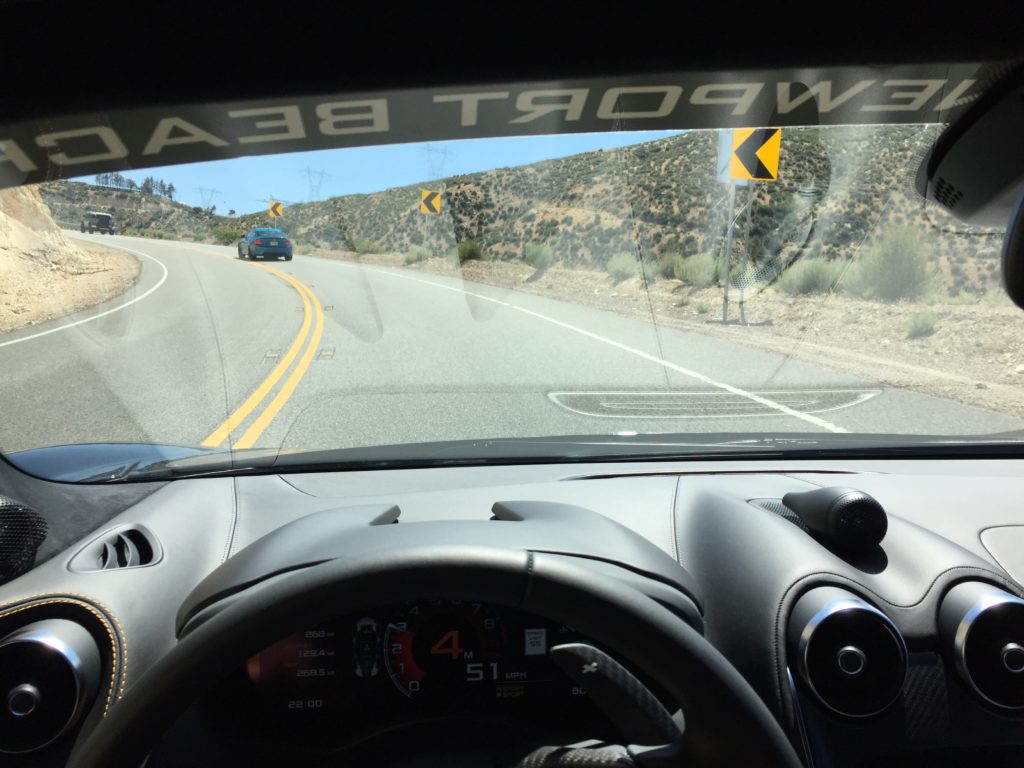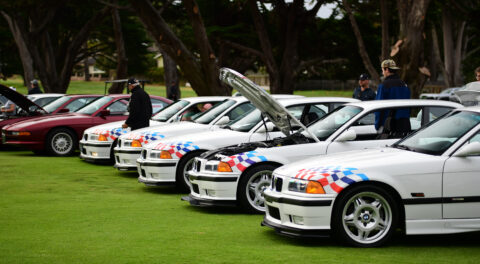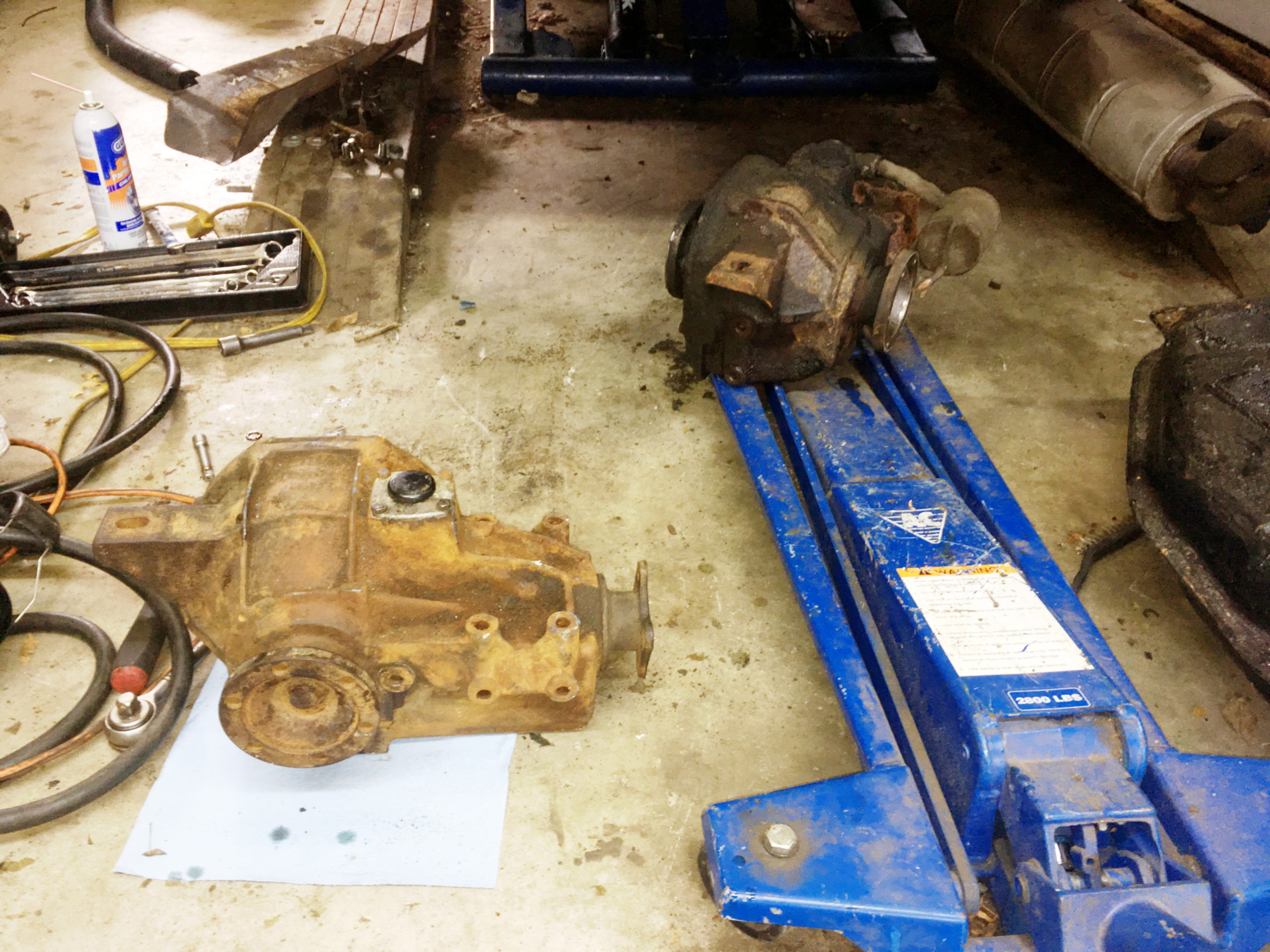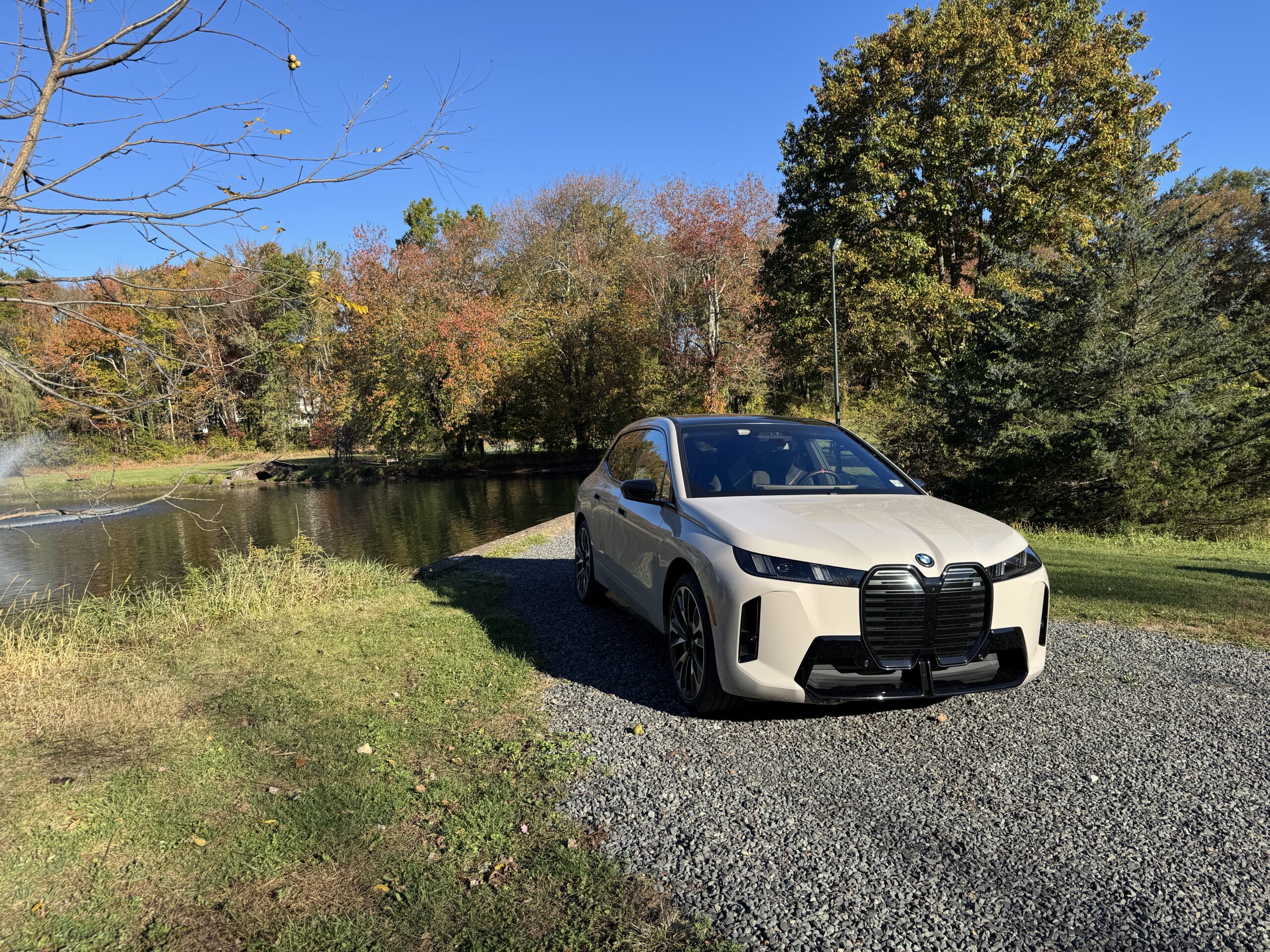Last month I wrote about $3,000 beater cars. This month I decided to move up-market—a few hundred grand—to something slightly more refined. It’s not a BMW, but sometimes it’s good to broaden one’s horizons.
The call went something like this; “We need a driver for a film shoot in a McLaren 570S Spider at Willow Springs International Raceway.”

Sunrise at Willow Springs. [Photo: Alex McCulloch]
Several weeks after that phone call, I arrived at Willow Springs just after sunrise on a bluebird Southern California day. The 66-year-old circuit is nestled at the base of a small butte in the western Mojave Desert. The low morning sun exaggerated the features of the butte with shadows, and the elevation gain of the Big Willow circuit as the asphalt climbed up and down it again. My first thought after taking in the 2-1/2-mile nine-turn track was man, this is a fast track. My second thought was This is going to be a good day!

The McLaren 570S Spider Arrives on a Flatbed. [Photo: Alex McCulloch]

The 570S Spider is art in motion even when still. [Photo: Alex McCulloch]

And the top goes down. [Photo: Alex McCulloch]

An obligatory “Stig” shot after I figured out how to get the doors open. [Photo: Alex McCulloch]
Ahem, nothing to see here…
I finally found the door release hidden under the deeply sculpted intake. It’s a touchpad (think Comfort Access in BMW-speak) that opens the dihedral doors with a sound not unlike those on the Starship Enterprise: cuuuush.

Leather and carbon-fiber abound in the cockpit. [Photo: Alex McCulloch]

Track Mode changes the instrument cluster to an F1-style display. [Photo: Alex McCulloch]

The little man in the climate control diagram wears a racing helmet! [Photo: Alex McCulloch]

Setting up the driver controls for Willow Springs. [Photo: Alex McCulloch]
I had done enough homework to know that manual shifting and adjustable power and suspension settings were unlocked by pressing the active button on the center console. I was assured that all systems were pre-prepared by McLaren for the day prior to its delivery to us, but I still warmed it up gently on the few laps I was given to learn the car and track.

Willow Springs all by my lonesome. [Photo: Alex McCulloch]
Willow Springs is indeed a fast track, but it isn’t particularly tricky or insidious. It is vastly wide, with varying pavement surface and camber differences across that width. Unfolding the track after a few laps, it was clear where to sacrifice and where speed was to be hunted. Turns Three, Four, and Five going up and down the hill were the most technical; after experimenting with different lines, I opted to carry more speed up the hill through Three with a somewhat neutral apex, then sacrifice in Four to straighten out Five and compound that speed into the massive arc of Turn Eight.
It took most of the morning before I could keep from a chicken-lift prior to the hump at Turn Six (I may have still lifted slightly). Turn Eight always had more speed to be found, which compounded through Turn Nine into top speed at the end of the front straight; I saw 152 miles per hour while still preserving the car.
The McLaren 570S Spider lacked the soul of a Ferrari or the legacy of a Porsche, but it made up for that with precision—incredible precision. Sure, McLaren has its own legacy, and I have always been a stalwart fan of Britain’s most famous F1 constructor, but I didn’t feel any of that behind the wheel of the 570S Spider. What I felt was empowered, empowered by an incredibly precise instrument. It always did exactly what I wanted it to without complaint.
There is an ever-so-slight initial turbo lag, as is to be expected in the post-naturally-aspirated era, but that could be easily mitigated with proper gear selection. And when those turbos do fully engage, prepare for time-travel-level acceleration. The shifting was lightning-fast—so fast you could almost do it with your mind.
Adjustable settings for suspension and power offer three modes: Normal, Sport, and Track. After a few laps, I found that on the undulating surface of Big Willow, I could push the car more and feel the nuance of its balance better with the suspension dialed back to Sport, while power remained in Track. The carbon-ceramic brakes were devoid of fade, and under threshold braking had the heavy feel typical of large rotors and multi-piston calipers.
The beauty of a precise instrument is that it inspires confidence. The 570S Spider was so well-mannered that after a few laps, stability control was not necessary, but I left it engaged most of the time, and used its occasional intervention to gauge to the smoothness of my throttle and steering inputs. Once I found those limits, I could sense that there was a ragged edge to be explored, and Mother of God, did I want to explore it—but that was not my job on this occasion, so professionalism prevailed.
The most remarkable element of the 570S Spider on Big Willow was its functional aerodynamics. Turn Two and Turn Eight are very-high-speed corners, and the aerodynamic grip the car achieved there was intoxicating. Unlike the few aero-dependent race cars that I’ve driven, there was no drag feel associated with using speed to “making it stick.” As I whittled my speed higher and higher through Eight, with nary a tire chirp, the magic of aerodynamics just kept on giving as I found more and more speed.
I don’t find the 570S a particularly attractive supercar (on the supercar scale), but that didn’t matter after I felt those aerodynamics at speed. Every swooping angle, crease, and bend has a purpose down the the artfully concealed vents in the front fenders. It literally is art with a purpose that must be experienced to be appreciated.

Filming consisted of on-car, car to car, drive bys, and drone footage. [Photo: Alex McCulloch]

Static shots high on the butte at Willow Springs. [Photo: Alex McCulloch]

On the Angeles Crest Highway the McLaren had a familiar cohort to Bimmerphiles. [Photo: Alex McCulloch]

Giving chase! [Photo: Alex McCulloch]
The remainder of the day was finished with static shots and open-road footage against mountain and cityscape backdrops. I could write another column about how shockingly devoid of traffic the Angeles Crest Highway was on a weekday afternoon, and how every car that we did encounter was one that you would want. In the evening, driving through crowded city streets in traffic in formation with a camera car, while remaining in character, was by far the most difficult challenge of the day, but we wrapped with no human beings or McLarens being injured.

And that’s a wrap! [Photo: Alex McCulloch]





















